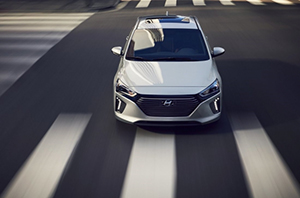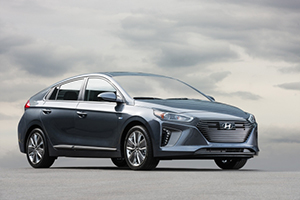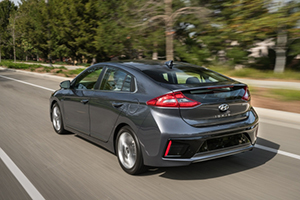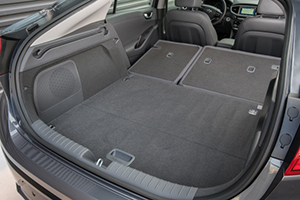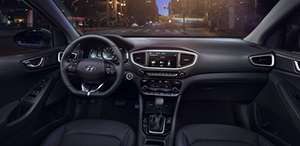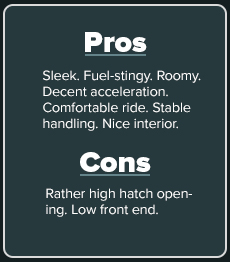2018 Hyundai Ioniq Hybrid SEL
The 2018 Hyundai Ioniq
Hybrid SEL is a solid rival to the Toyota Prius
Price: $24,000
I’ll bet if you tell most people you’re driving the
fairly new Hyundai Ioniq hybrid that they’ll have no idea
what car model you’re talking about. Hyundai—yes.
Ioniq—no.
On the other hand, Toyota’s Prius hybrid has been around just
about forever and most people know exactly what it is. Still, Hyundai
has a popular name, so it sold 8,599 Ioniqs during the first six months
of 2018, or approximately double the number it sold in the same 2017
period. (Toyota sold 46,171 Prius models in the first half of 2018.)
Chances are sales of the compact four-door hatchback Ioniq will pick
up. It’s got a lot going for it, including a sleek body,
roomy interior, lively performance and a decent ride. Not to mention
high fuel economy, which is what the car is largely all about.
My test $24,000 Ioniq Hybrid SE provided an estimated 55 miles per
gallon in the city and 54 on highways. Its 1.5-liter direct injection
hybrid four-cylinder engine, paired with its electric drive, generates
a combined 139 horsepower. That’s enough to deliver lively
performance in town and good highway passing ability.
The powertrain works with a responsive six-speed dual clutch automatic
transmission that has an easily used manual shift feature with steering
wheel paddles. The transmission can be put in Sport or Eco
modes. Sport mode tightens the car up a bit and provides more
responsive acceleration, but eats into fuel economy. It’s
good for especially fast moves in traffic, but Eco mode otherwise is
just fine.
The front-drive Ioniq’s steering is quick enough, although
not much in the way of road feel. The suspension provides a comfortable
ride—although sharp bumps can be felt. Handling is good,
although, after all, this is an economical compact car, although a
rather long one at 176 inches. Still, it has vehicle
stability management with traction control and generally sporty
handling if you don’t push it too hard on its 15-inch wheels,
shod with 65-series tires. I found that the four-wheel anti-lock disc
brakes with regenerative braking and electric brake force distribution
calmly handled sudden quick stops.
There’s plenty room for four tall occupants and the center of
the rear seat is soft enough to handle a fifth, at least on shorter
trips. Otherwise, the unoccupied center has a fold-down armrest. All
doors have large storage pockets and open wide for easy entry. The
front seats provide good side support in curves, and the quiet interior
has high-grade materials. The infotainment system with its 4.2-inch
color screen can be easily used, and there’s redundant
dashboard buttons and knobs if one doesn’t want to bother
with the screen.
The hatch has a rather high opening, but glides open on twin
struts to reveal a fairly large cargo area and has an interior indented
area to help close it without touching outside sheet metal.
Significantly enlarging the cargo area are 60/40 split-folding
seatbacks that easily flip down..
Hyundai doesn’t skip on the Ioniq Hybrid SEL’s
equipment. It includes a push-button start, dual automatic temperature
control, power driver’s seat, heated front seats, AM/FM/MP3
auto system, Android Auto and Apple CarPlay integration and a bluetooth
hands-free phone system.
Options include automatic emergency braking, lane-keep assist system
and smart cruise control.
Safety features include body-color heated side mirrors with turn signal
indicators, automatic headlights, LED daytime running lights, lots of
air bags, door handle approach lights, blind spot detection with rear
cross-traffic alert, lane change assist and a rearview camera.
The hood is held up with an awkwardly engaged old-fashioned prop rod,
but the engine compartment looks like it belongs in the latest space
shuttle.
The back window has a slender center horizontal bar that results in an
upper and a lower glass area, but I hardly noticed it after a few miles
of driving. If anyone comments on the bar, just tell them that the
1970s Maserati Khamsin sports car had the same type of rear window bar.
